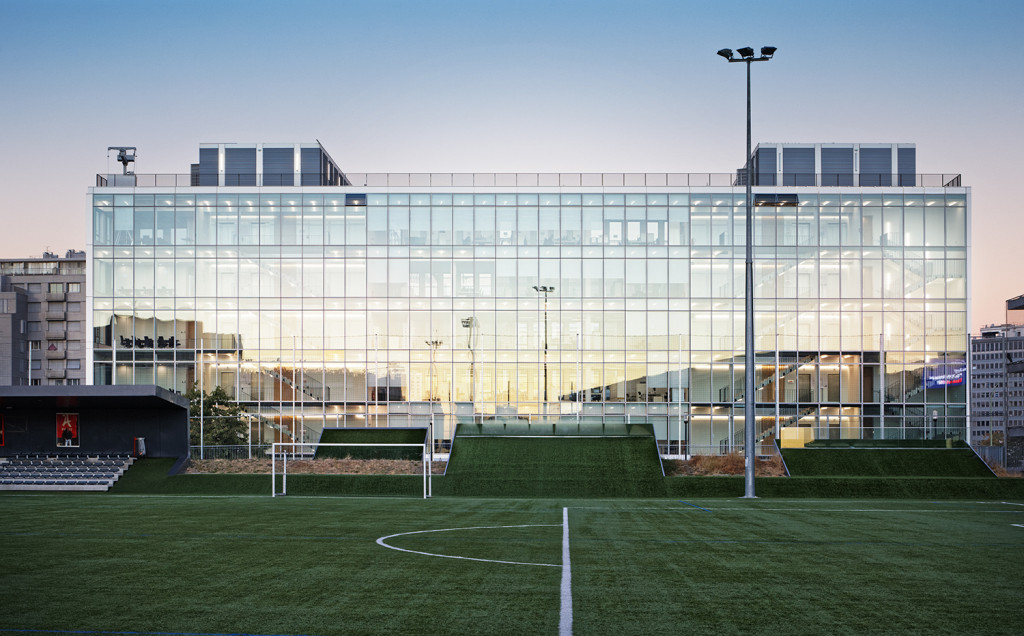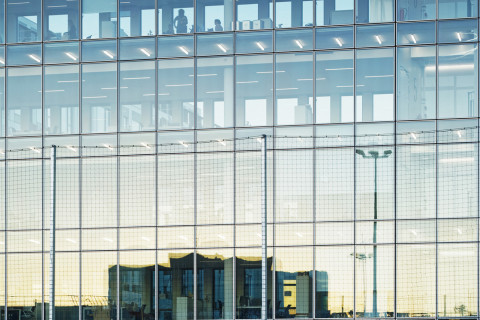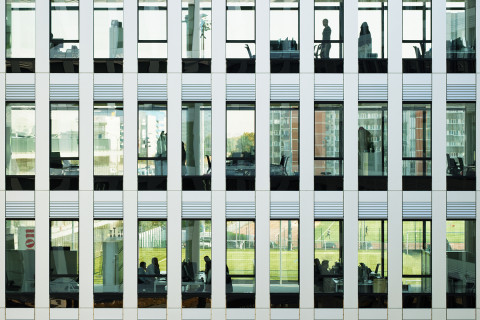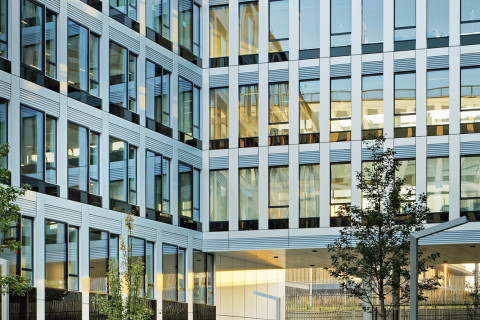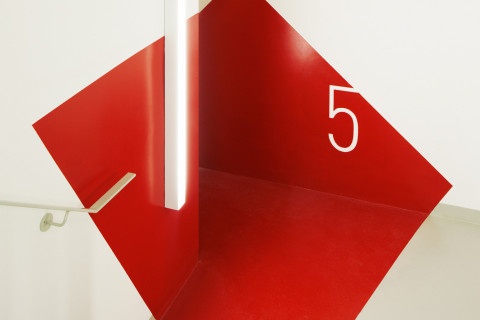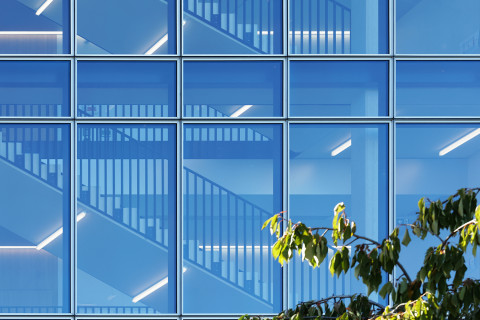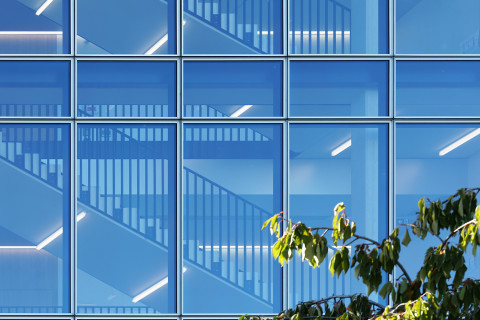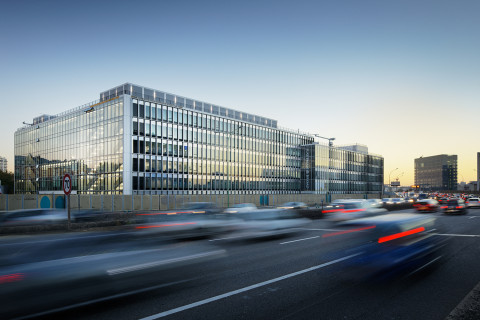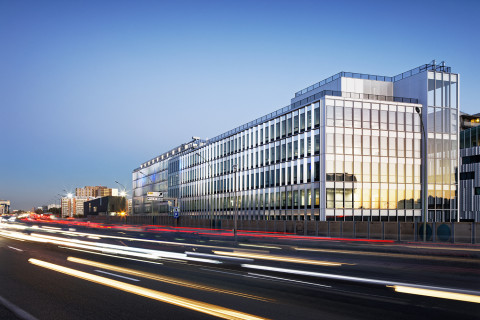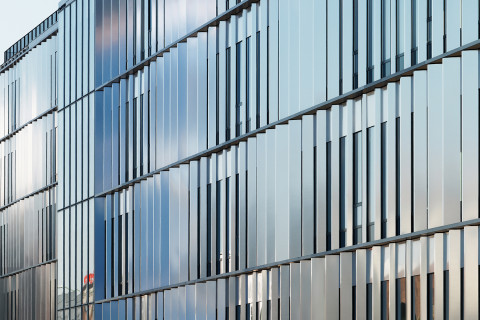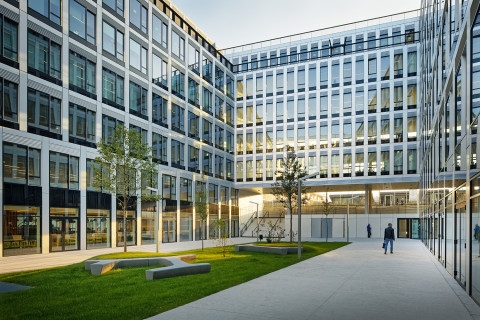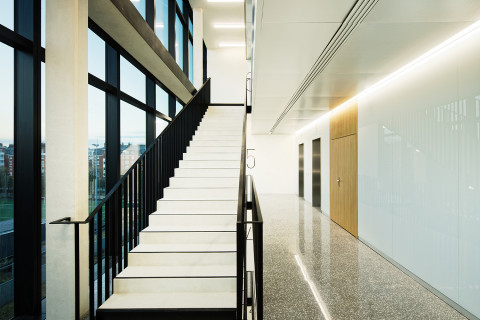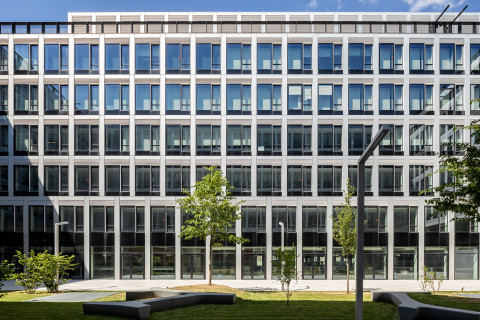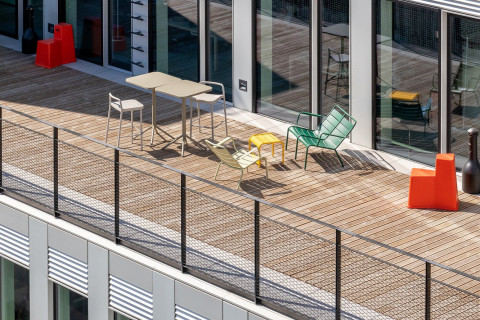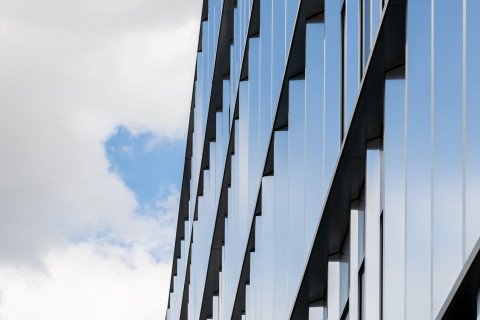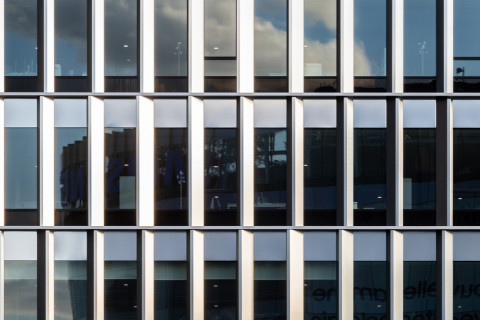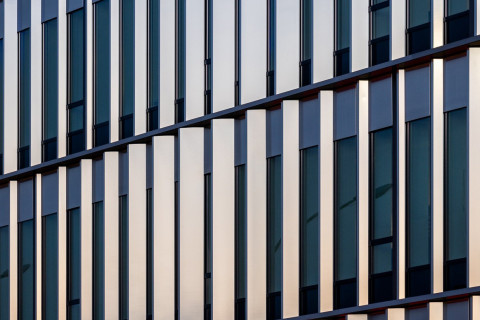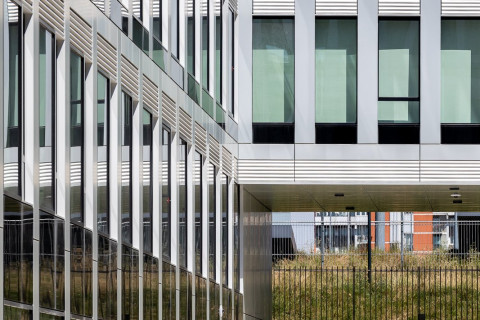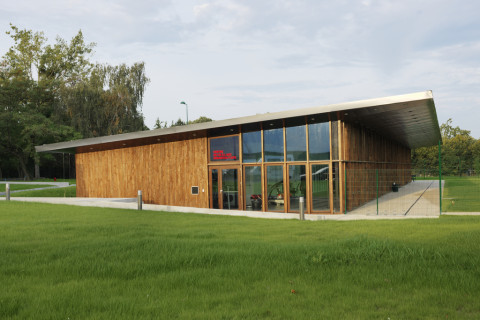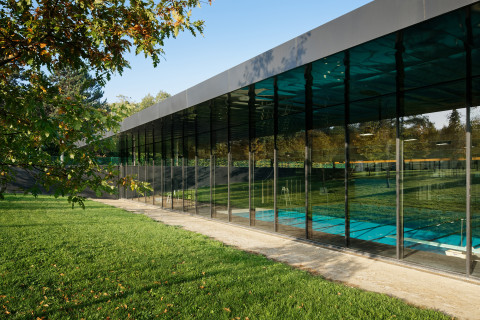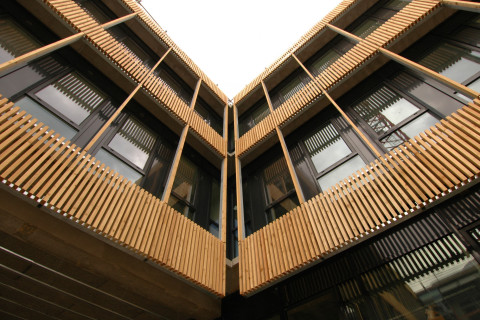CANON - Siège France, Porte Pouchet
Description du projet
Our Porte Pouchet office project is inscribed in a tripartite urban context at the confluence of three contrasting itineraries – the Périphérique (Paris ring road), the Green Beltway, and the Parisian cityscape characterising the redesigned neighbourhood.
Firstly, it is located on a very specific section of the Périphérique ring road. In effect, the “Motorway of the Presidents” features a number of icons of the economic sphere. The fact that there are buildings on either side of the roadway, coupled with the transversality of Paris and its suburbs provide the area with a singular identity as an urban boulevard. Another characteristic of the Porte Pouchet is that the route taken by the Périphérique presents fresh landscapes and reveals views of the east of Paris and Batignolles from the prow of Building A. The project’s distributive and work spaces are laid out specifically to exploit those views. Reflecting the dialogue between the building and the Périphérique, the lateral façades (West and East Façades) simultaneously serve as show windows for the offices and spaces of communication.
In parallel with the Périphérique, the Green Beltway provides another very particular landscape. The future Place Pouchet, which will feature a rich variety of plant life, will follow the course of the Beltway, furnishing a link with Batignolles Cemetry. The project will emphasise the permanence of the Beltway by providing a solid link between Place Pouchet and the Max Rousié Stadium. This link will be expressed by means of generous gaps between the buildings and by the presence of a strong landscaped section. It will also feature the public easement requested.
The third level of urban reading is, here, that of the neighbourhood, in that the urban project will focus on reconstituting a typically Parisian residential fabric. The project will not only benefit from having a prestigious Paris address, but also offer users the pleasure of working in the city.
A series of sequenced volumes
In order to break up any potential visual monotony in the North façade, the buildings are of different heights and are located at different distances from the roadway, so that the layout can be seen from the Périphérique. The North Buildings are placed along the same axis as the Emergency Centre designed by the architect Bruno Mader. The ensemble forms a series of kinetic façades overlooking the Périphérique.
The three buildings, all of them clearly identified, are linked by two bridge buildings, one over Rue Emile Borel, articulated with the public roadway, the other spanning the Max Rousié Stadium. The second road bridge makes it possible to read the way in which the building functions. The building provides a view of the metropolis, helps take us beyond the Green Beltway, and invites us to carry out a transversal reading of the site.
A high degree of flexibility in terms of use
While the complex is capable of hosting single users and of offering them optimal conditions of distribution, it can also be divided by floor into for autonomous parts, providing it with greater flexibility in terms of use.
The areas at the ends of the floors free up substantial areas of open-plan office space, which can be partitioned with ease should the need arise. These large floors mean that the complex can be put to a substantial number of different uses.
Omnipresent natural light
All the lift levels provide a view of the exterior at first light of day. Furthermore, the stairways at the ends of the building also receive the first light of day.
In order to maximise natural light in the work spaces, the depth of the office space in the “bridge buildings” is reduced, which guarantees for all those spaces, regardless of the layout, receive a maximum amount of natural light.
To the North, there is a kinetic façade designed to be seen by users from the Périphérique.
The façade’s design principle is based on the various features of the overmantel, which is made of two materials, namely anodised natural aluminium, and coloured anodised aluminium. From floor to floor, the geometry changes, as if the overmantel were pivoting on itself. Modifications of angles of reflection give the façade with a kinetic effect. The two materials are tinted to ensure that this kinetic effect is revealed by means of the presence of different colours. The pierced concrete wall structure guarantees that the façade meets the required acoustic and thermal standards.
The overmantel façades
There are three different types of overmantel façades.
In the first sequence, the overmantels cover two floors. This sequence is that of the walkway along Rue Emile Borel and the landscaped path in the heart of the plot. Reflected light from the overmantels promotes a visual exchange between internal and external spaces so that life in the offices intermixes with the life of the neighbourhood.
The passageways under the buildings create a line signaling a change in order.
In the third sequence and on the recessed axis of the fifth floor, the line of the overmantels is repeated, cutting through the façades on a horizontal axis. Although the overmantels are all 2.70 metres in length, 135cm partitions are used between the windows.
Buildings A, B and C are articulated by means of a modification in the grid pattern of the façade (135cm for Building A, 270cm for Buildings B and C).
The screen façade overlooking the Stade Rousié
The East Façade features an entirely glazed transparent curtain wall. Since this façade does not host any permanent work stations, the bays are atypical in terms of size and are designed to contrast with the traditional 135cm layout generally used to partition office space. Lift floors, stairways and corridors leave a visible trace on the façade.
The reflecting façades
The East and West Façades will provide a reflection of the landscaped space of the future Place Pouchet, as well as of the Max Rousié Stadium, thereby helping to inscribe the building within the Green Beltway.
https://www.leclercqassocies.fr/fr/projets/siege-de-canon-france-porte-pouchet
Matériaux
A propos de l'agence LECLERCQ ASSOCIES
Activité
Plus de projets de l'agence LECLERCQ ASSOCIES
Marketing & publicité
Vous souhaitez communiquer avec la Maîtrise d'oeuvre Bâtiment ? N'hésitez pas à nous contacter.

